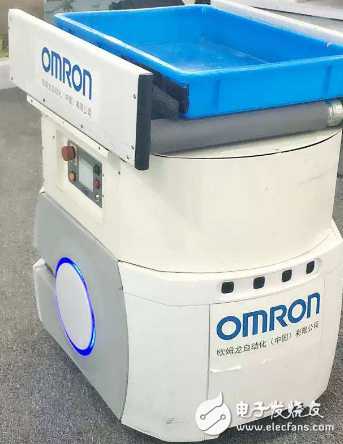Robot development is currently in full swing, with major manufacturers racing to capture a significant share of the growing market. Rumors have circulated that Omron, a leading global automation company, has taken a proactive step by establishing a new production line in Europe, aiming to strengthen its position in the region.
Recently, Omron installed two advanced production lines at its European facility located in Den Bosch, the Netherlands. These lines are specifically designed for the manufacturing of parallel robots, such as the Hornet and Quattro series, which are widely used in packaging and component assembly. The primary goal of this expansion is to reduce delivery times, enhance responsiveness in the European market, and improve the overall efficiency of robot products delivered to customers.
The Quattro Parallel Robot, one of the key models produced on these lines, is capable of performing 300 pick-and-place actions per minute, making it one of the fastest and most flexible parallel robots in the world. This innovation underscores Omron’s commitment to delivering high-performance robotic solutions tailored for industrial applications.

Looking ahead, Omron has shown strategic foresight by acquiring Adept in 2015, a Silicon Valley-based company known for its SCARA robots, parallel robots, AGV systems, and machine vision technologies. This acquisition allowed Omron to expand its robotics capabilities and better serve industries such as automotive, food and beverage, and packaging. By integrating Adept’s technology, Omron enhanced its automation solutions and improved its ability to meet diverse customer needs.
In addition to internal growth, Omron has also focused on expanding its ecosystem through strategic acquisitions. For instance, the company made an offer to acquire Microscan, a U.S.-based leader in bar code readers and machine vision systems. This move aims to strengthen Omron’s control over manufacturing processes, enabling seamless integration of IoT technologies across production floors. Machine vision plays a crucial role in modern robotics, and this acquisition will help Omron improve robotic perception and precision.
Meanwhile, other industry giants are also making waves. ABB, a Swiss technology firm, recently joined forces with Northvolt to build a large-scale lithium battery factory in Europe, aiming to compete with Tesla's Gigafactory. The plant, expected to start operations in 2023, will produce 32 GWh of energy annually—nearly matching Tesla’s output. ABB will provide robotics and electrification solutions for the project, further solidifying its presence in the EV and energy sectors.
Localization strategies are proving essential for companies like Omron. With a massive production base in Shanghai, China, Omron produces one-third of the world’s automation products, catering to the country’s rapidly evolving manufacturing sector. Similarly, setting up robotic production lines in the Netherlands helps reduce costs and improve supply chain efficiency.
As the demand for personalized and customized solutions grows, traditional manufacturing must evolve into intelligent, data-driven systems. Technologies like big data, AI, IoT, and AR are becoming vital tools for improving productivity, reducing costs, and enhancing flexibility. Companies that adapt quickly to these changes will be better positioned to thrive in an increasingly competitive global market.
2.4G/5.8 G Antenna
Twisted-pair, cable to optical fiber, waveguide and other transmission media are conductive media, and electromagnetic wave in free space in the long distance propagation is non-conductive media transmission; Attenuation is therefore a complex function of distance and is influenced by the atmosphere around the Earth. The main factors affecting propagation attenuation are: propagation frequency band F, propagation distance L and electromagnetic wave rate C(close to the speed of light). Free space propagation loss of microwave segment signals such as satellites is about 36000 km from the ground. The beam diverges with distance. High-power klystrons can transmit signals up to kilowatts, while satellite transponders can only be powered by solar energy. The satellite's limited surface area makes it difficult to transmit hundreds of watts of downlink power. As a result, the ground station's received signal power is only microwatt level and includes a compensation effect of tens of decibels of the gain of the receiving and transmitting antennas.
2.4G or 5.8G Antenna Signal Booster,2.4G Outdoor Antenna,2.4G indoor Antenna,2.4G Small Antenna
Yetnorson Antenna Co., Ltd. , https://www.yetnorson.com